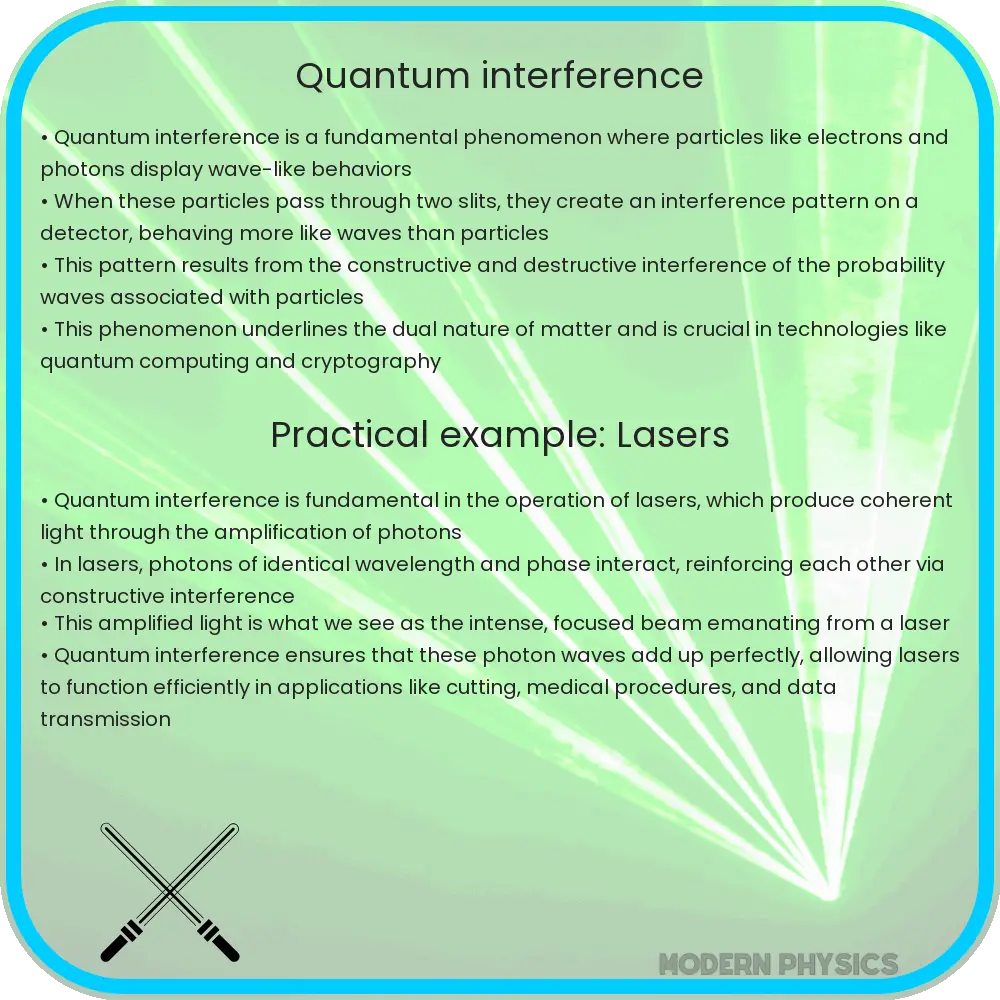SEO Description: Quantum interference, a key concept in quantum mechanics, involves the overlap of quantum waves leading to unique interference patterns and underlies principles in quantum computing, imaging, and metrology.

Quantum Interference: Coherence, Applications & Patterns
Quantum interference is a fundamental phenomenon in quantum mechanics, showcasing the mysterious and fascinating nature of particles at the smallest scales. This article explores the basics of quantum interference, the role of coherence in this process, its diverse applications, and the intriguing patterns it produces.
Understanding Quantum Interference
Quantum interference occurs when particles such as electrons, photons, or even larger molecules exhibit behavior that contradicts classical physics. The core idea is that these particles display wave-like properties, and when two or more quantum waves overlap, they interfere with each other. This can lead to constructive interference (where wave amplitudes add up) or destructive interference (where wave amplitudes cancel each other out).
The classic example of quantum interference is the double-slit experiment. When particles pass through two closely spaced slits and land on a screen, they create an interference pattern typically characteristic of waves, not particles. If we try to measure which slit the particle goes through, the interference pattern disappears, a phenomenon that underscores the Heisenberg uncertainty principle and wave-particle duality.
The Role of Coherence
Coherence is crucial for observing quantum interference. Coherence refers to the fixed phase relationship between different points in a quantum wave. For interference patterns to emerge, the waves must be coherent.
If coherence is lost, which can happen due to interactions with the environment or other particles (a process known as decoherence), the clear interference pattern vanishes, and the behavior transitions back to what we would expect from classical particles.
Applications of Quantum Interference
Quantum interference is not just a curiosity; it has practical applications across various fields:
Interference Patterns
The most iconic result of quantum interference is the interference pattern, characterized by alternating bright and dark bands. These patterns arise when waves overlap and either reinforce each other (constructive interference) or cancel each other out (destructive interference).
Mathematically, the intensity pattern I on the screen can be described using the interference equation:
I(x) = I0 * (\cos(\delta/2))2
where:
The phase difference \delta itself depends on the path length difference \DeltaL and the wavelength \lambda of the particles, given by:
\delta = \frac{2π \cdot \DeltaL}{λ}
Factors Affecting Quantum Interference Patterns
Several factors can influence the nature and clarity of quantum interference patterns:
Experimental Setups
Different experimental setups can be used to observe quantum interference, each with unique advantages for studying quantum phenomena:
Conclusion
Quantum interference is a cornerstone of quantum mechanics, highlighting the wave-particle duality and the profound differences between classical and quantum physics. By understanding how and why quantum interference occurs, and exploring its practical applications, we gain deeper insights into the quantum world, potentially harnessing these phenomena for groundbreaking technologies. Whether it’s in quantum computing, advanced imaging, precision measurement, or highly sensitive sensors, quantum interference continues to revolutionize our understanding and capabilities at the smallest scales.
